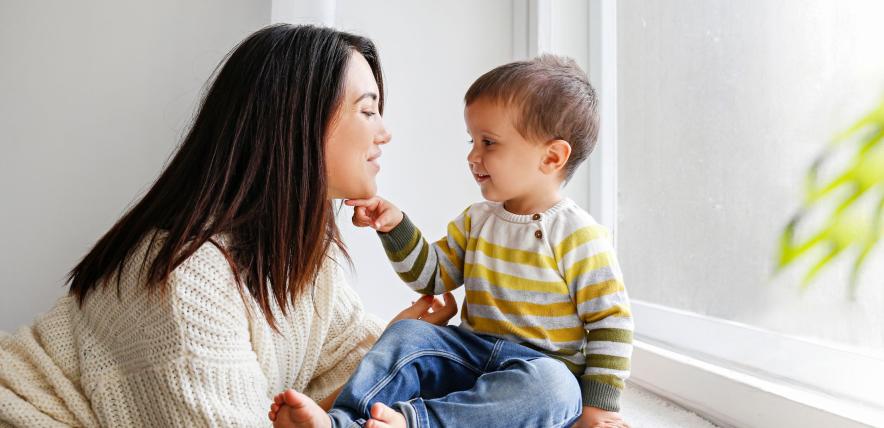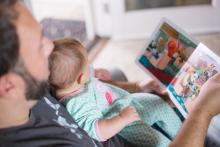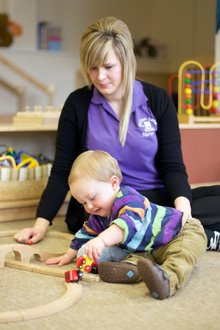Let’s talk about feelings – discussing the link between a child’s ‘emotional literacy’ and their language development
A very literal meaning of literacy is the ability to read and write. So emotional literacy could be said to be a person’s ability to ‘read’ their own and other people’s emotions, understand and process them.
What might this look like for a child?
-
Can describe how they are feeling and begins to think about how others may be feeling
-
Builds healthy relationships with adults and forms friendships with peers
-
Shows affection or concern for others
-
Has some level of self-control when it comes to managing their emotions and behaviours
These are skills that children need support to learn and develop within their early life; it’s not something they are born able to do. But how does this link to a child’s language development?
Let’s consider for a second how it might feel for a child that has all of these emotions inside of them, but they do not yet have the words for them or the ability to use words to describe or communicate them with others. It’s understandable that this might feel frustrating and overwhelming.
These children will find other ways to communicate their needs, wants and desires – this is quite often displayed through their behaviours. These ‘difficult’ or ‘challenging’ behaviours we may witness are, in reality, perhaps the only way a young child can communicate how they are feeling or what they want.
Having good communication and language skills provides children with the ability to interact positively with others and share their inner thoughts and feelings. Our role as adults is to support children’s language development in general but also to provide them specifically with the skills and vocabulary to express and process their emotions. Not having these skills may increase the likelihood of these children experiencing frustration due to not being able to communicate effectively and in turn could affect their confidence and overall well-being.
So how can we support children’s language development in relation to their emotional literacy?
Here are some top tips:
Give feelings a name
By giving feelings a name, you are building your child’s vocabulary and their ability to link how they feel with a word to use in future situations. This might be saying something like "I can see you’re feeling angry...” or “it’s okay to feel sad when...”. You might also highlight how your child might physically be feeling inside, for example “can you feel those flutters in your tummy? This happens when you feel nervous or excited…”
Naming your own feelings also helps children to see how emotions present in others and how they come across in behaviours or facial expressions, which in turn helps them notice these feelings within themselves in future. You could do this by saying something like “I feel scared when…” or “I am happy because...”
When thinking about children that do not communicate verbally, you could also support their understanding by using pictures or books – try describing how characters may be feeling in stories or using images of different emotions or facial expressions. These images could then be used by the child to show their own emotions when trying to communicate them.
Listen
Be a good listener and follow your children's interests (without interrupting!). This shows them that you care about what they think and feel. Get down to their level so that they understand that their contribution is important.
Remember, for those children not using words to communicate, we can still ‘listen’ to what they are telling us by noticing other ways that they are showing us how they are feeling. Perhaps you notice that your child gets fidgety when they are feeling nervous or begins to throw things when they are feeling tired – these are still ways that your child is communicating so it’s important that we notice and respond to these cues.
By providing children with simple choices, we are giving them some control over what happens in their lives. This could be as simple as “would you like cereal or toast for your breakfast?” This easy method gives your child a voice and will support their self-esteem and confidence, all linked to their emotional wellbeing – this can also be used with pre-verbal or non-verbal children as they could communicate with a point or a gesture.
Support emotions
Let children know that it’s okay to feel all emotions – acknowledge when they are feeling upset or frustrated without overlooking or dismissing these emotions. By doing this, we are showing them that other children and adults feel these things too, and that it’s okay to feel this way.
You can begin to support your child to process their emotions through ‘co-regulation’ in which you model and support them to understand and deal with how they are feeling – this may be offering a cuddle or using a calm voice.
You could provide your child with appropriate ways to deal with some of their emotions. This way, you are still noticing and acknowledging how they are feeling, keeping clear boundaries in place and providing them with a way that they could deal with what they are experiencing. For example, “it’s okay to feel upset but we can’t throw our toys as it’s not safe and someone could get hurt. Instead, when you’re feeling sad you could try…”
Some suggestions may be doing some breathing techniques, accessing a quieter area, reading a book, a sensory activity or asking for a cuddle.
FREE online Family Connect session
Let's talk about feelings
This session will explore what emotional literacy is and how it impacts our children's overall wellbeing and development.
We will discuss how to support children to recognise and talk about different emotions in themselves and others and outline the link between language development and wellbeing, and the possible impact on children that may struggle with their words in demonstrating their emotions.
See upcoming Family Connect sessions here.







